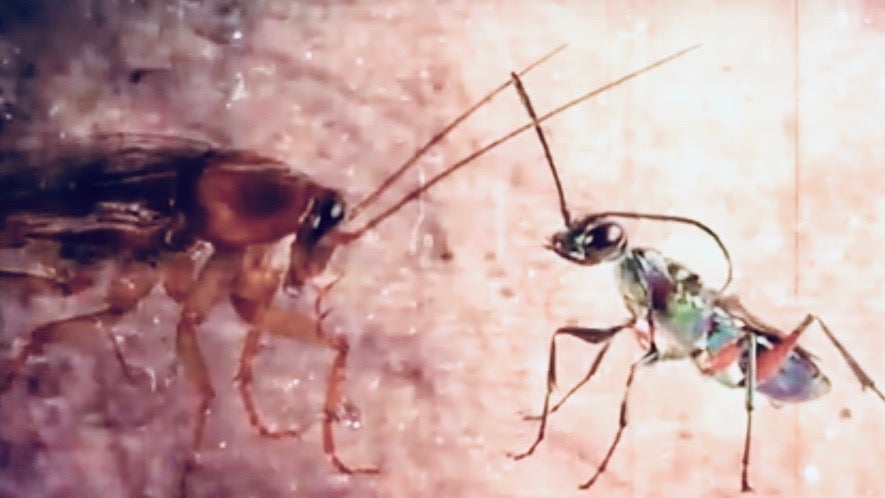A cockroach’s karate kick is the trick to fend off killer zombie wasps
Humans loathe roaches, so we don’t feel remorse about killing them, and don’t mind if other living things do it, either. Emerald jewel wasps routinely zombify these creepy pests, basically sedating them to death—it’s the only way the wasps can reproduce—which means we’re rooting for the zombie’s success in the natural horror movie known as life.


Humans loathe roaches, so we don’t feel remorse about killing them, and don’t mind if other living things do it, either. Emerald jewel wasps routinely zombify these creepy pests, basically sedating them to death—it’s the only way the wasps can reproduce—which means we’re rooting for the zombie’s success in the natural horror movie known as life.
But as is typical of roaches, they refuse to go quietly. Scientists now know how they fight their parasitic assailants.
A new paper entitled “How not to be turned into a zombie,” published in the journal Brain, Behavior and Evolution on Oct. 31, shows that adult American cockroaches can usually survive killer zombie wasp attacks when they use one particular move: an extremely effective karate kick. When roaches used the move in 63% of predatory attempts, zombie wasps were rebuffed, according to the study conducted byVanderbilt University biologist Ken Catania, who studies predator-prey interactions.
Catania observed the insects’ battles using ultra slowed videography and discovered something no one has ever seen before—roaches are apparently masters of the martial arts. “The cockroach has a suite of behaviors that it can deploy to fend off the zombie-makers, and this starts out with what I call the ‘en garde’ position, like in fencing,” the biologist said in a statement. “That allows the roach to move its antenna toward the wasp so it can track an approaching attack and aim kicks at the head and body of the wasp, and that’s one of the most efficient deterrents. It’s reminiscent of what a movie character would do when a zombie is coming after them.”
Juvenile roaches were not nearly as masterful at the kick, however. They fell prey to the zombie wasp attacks much more often than adults, according to the study.
When the wasp venom takes effect, the cockroach is sedated and led by its antenna into a hole, where the wasp deposits an egg and then seals the exit with debris. Technically, after an attack cockroaches might walk, run, or fly if properly stimulated—by a scientist, say—but they don’t in the wild, and researchers don’t know why. It’s “as if they are slowly eaten alive by the developing wasp larva,” the paper posits. Ending up in that hole is a death sentence for the roach.
No previous research detailed how cockroaches escape this grim fate. “Here it is shown that many cockroaches deter wasps with a vigorous defense. Successful cockroaches elevated their bodies, bringing their neck out of reach, and kicked at the wasp with their spiny hind legs, often striking the wasp’s head multiple times,” according to Catania’s study. The paper concludes, “Thus, for a cockroach not to become a zombie, the best strategy is: be vigilant, protect your throat, and strike repeatedly at the head of the attacker.”